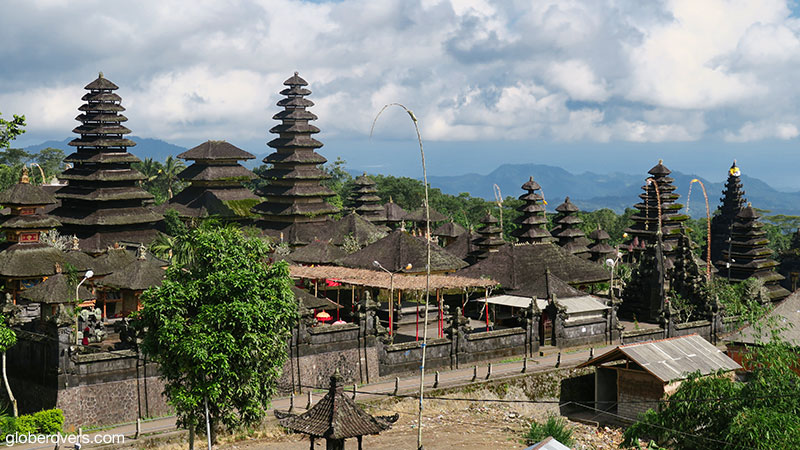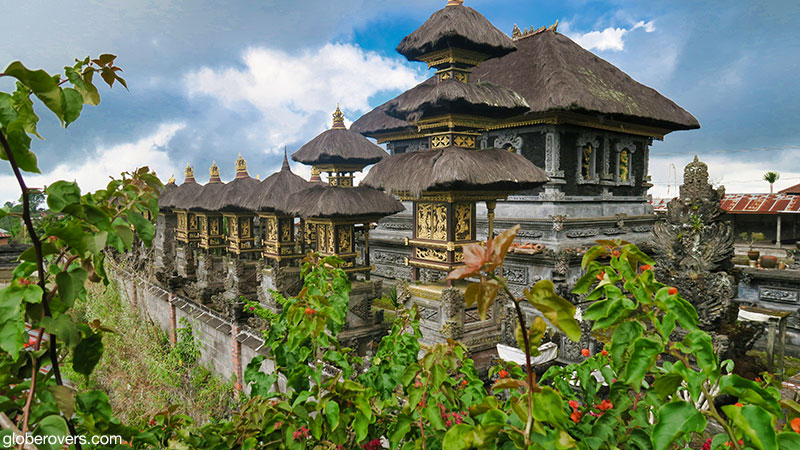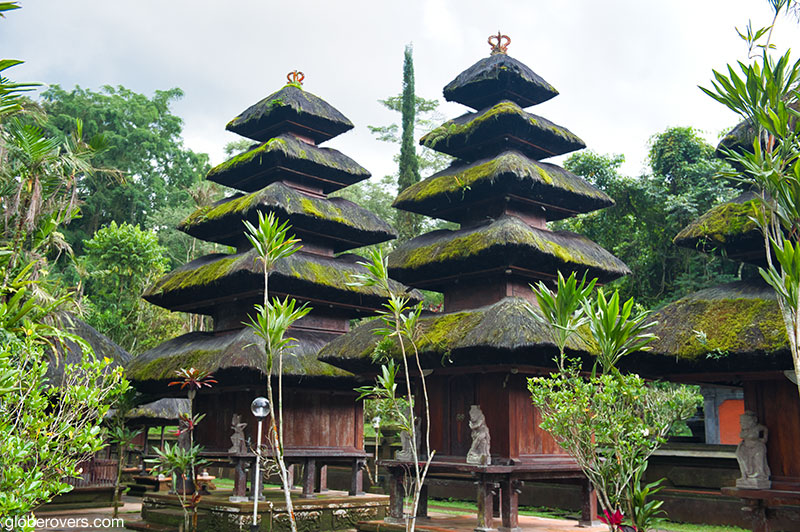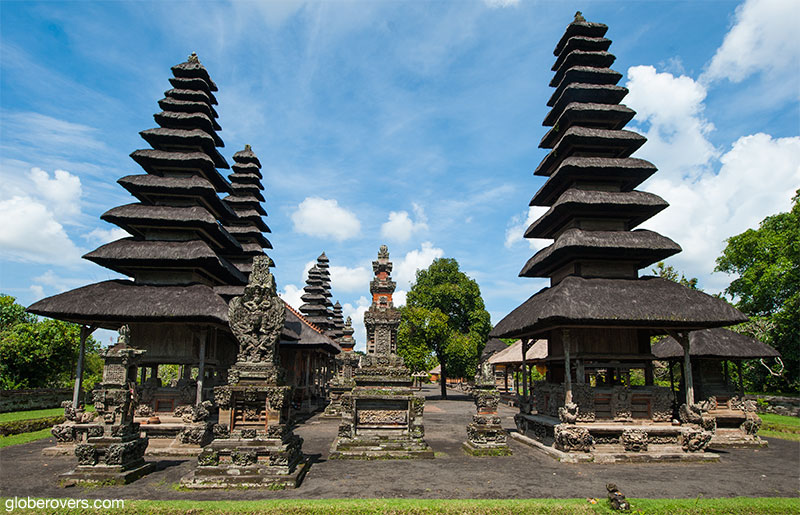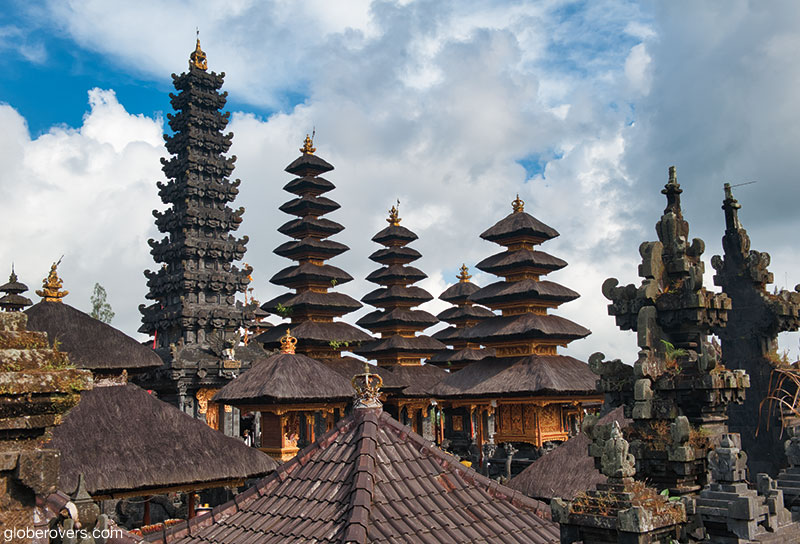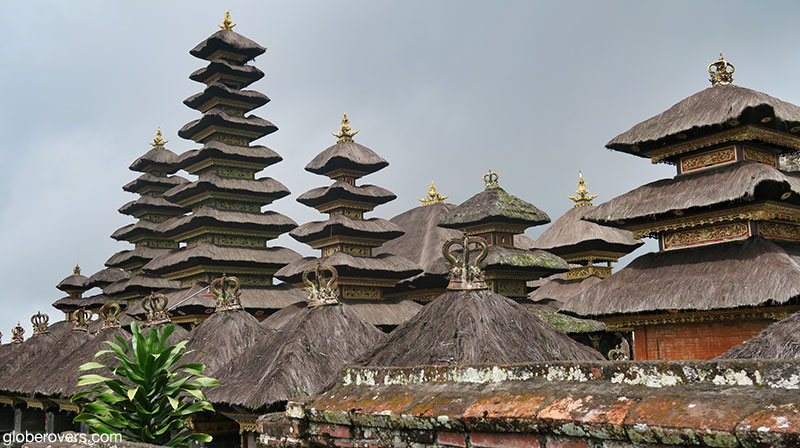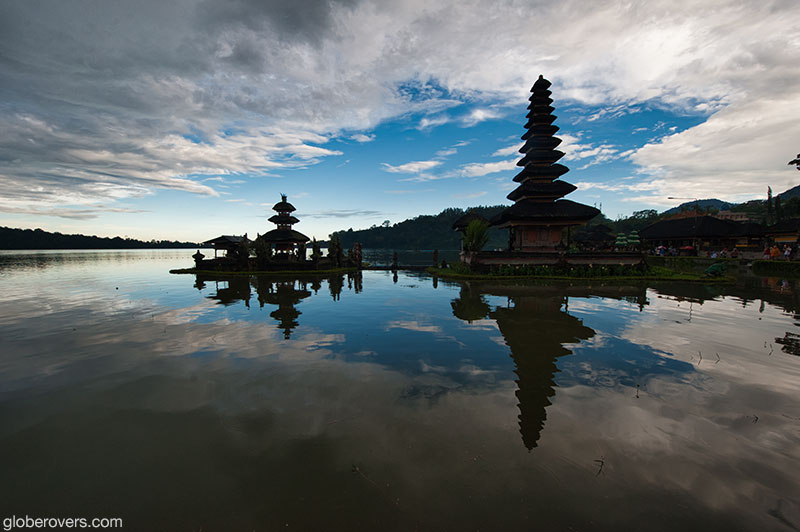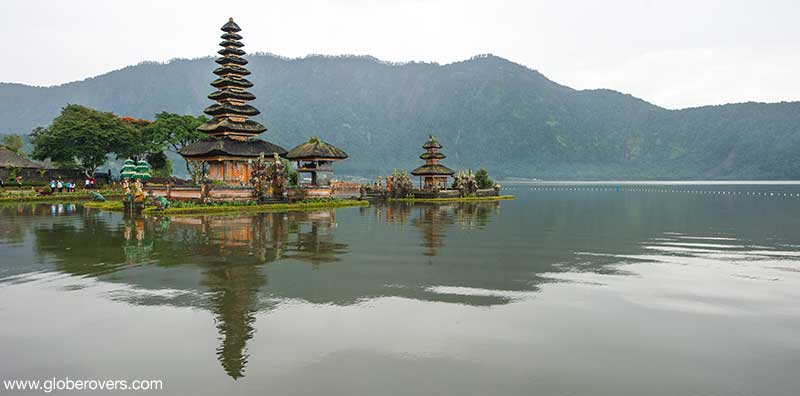
Commonly referred to as the “Island of a Thousand Temples”, “Island of Gods”, and “Bali Dwipa”, Bali island is the most-visited Indonesian island by foreign travellers. While most travellers start and end their Indonesia journey in Bali, often fixated on their luxurious tourist resorts and spas, Indonesia is much more than Bali.
Bali’s main tourist attraction areas are suffering greatly under mass tourism, though it’s easy to get away and escape the crowds and development.
Many seasoned travellers to Indonesia will argue that Bali is not Indonesia. Bali is uniquely Bali, and not typical of Indonesia.
As a starter, while most Indonesian people are Muslim, the Balinese people practice Balinese-Hinduism. The Balinese-Hindus celebrate about 60 religious holidays a year, so they commonly organise their lives around the practice of their religion with almost every aspect of their lives involving prayer, worshipping, and offerings to their gods.
Why travel to Bali?
- The low-down: Bali has changed a lot over the past 20 years. Nowadays the southern beaches are overrun by tourists with luxury brand shop and fancy highways and jammed by-ways. Still, the island of Bali is magical once you escaped these areas.
- The brightest highlight? Get out of the busy southern beaches area (and even Ubud) and enjoy the rest of the island – the temples, culture, quaint villages, the people, beaches, everything.
- Intrepid destination? Bali Island has many unexplored areas so it can be a haven for intrepid travellers if you know where to go.
- Globerovers score (10 is highest): Bali is one of those places that you must visit before you die – and don’t judge Bali by the crowded and developed areas. Find the real Bali and then judge. We give Bali Island a score of 8.
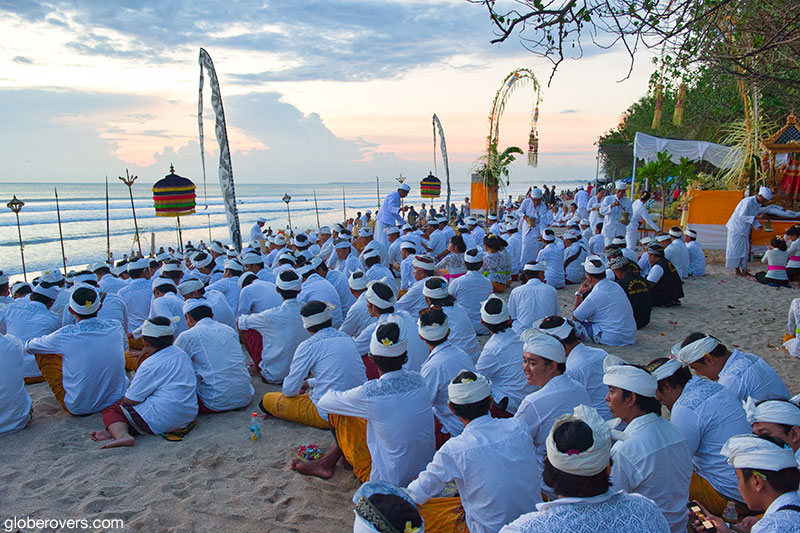
Different ceremonies form an essential part of every Balinese person’s journey through life, a journey of colour, aromas, and celebration. Their culture is vividly expressed through their traditional arts, dances, festivals, and religious offering ceremonies.
The island of Bali lies just over three km east of Java island, separated by the Bali Strait. The island has the shape of a sick chicken facing west towards Java, with a land area of almost 5,800 km².
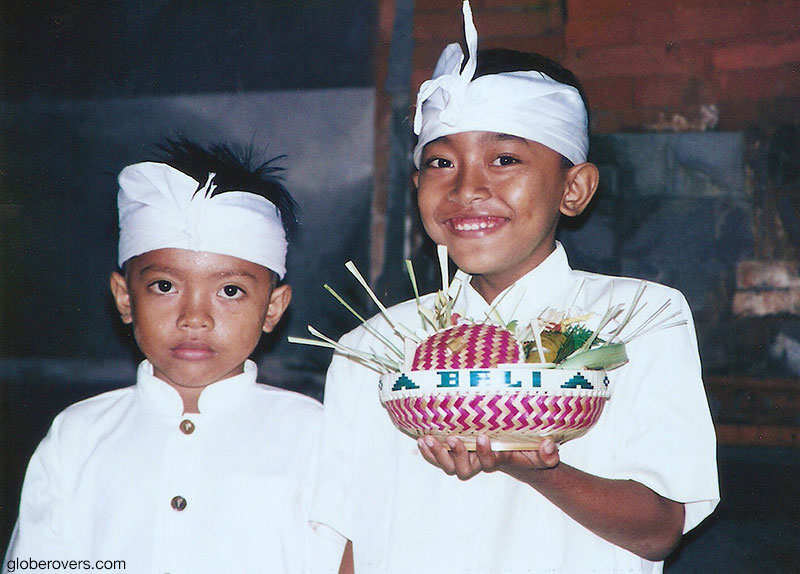
Bali’s central mountains include several peaks rising over 3,000 metres in elevation, with Mount Agung, or locally known as Gunung Agung, the highest at 3,031 metres. Mount Agung is an active stratovolcano which, prior to the current eruptions, last erupted in 1963, one of the most devastating volcanic eruptions in the modern seismographic history of Indonesia.
The “Island of Gods” is developing fast but remains charming and beautiful.
The cone-shaped peak dominates the surrounding area, even influencing the rainfall patterns. Since September 2017 there has been an increase of seismic activity around the volcano which has resulted in the evacuation of thousands of residents from the surrounding areas. For months the volcano continued spewing ash clouds, mudflows and fire. Locals remain on high alert.

Bali is known for its beaches. Those in the south tend to have white sand while those in the north and west have black sand, ample evidence of Bali’s historic formation and reshaping by volcanic eruptions. The big swells make for great surfing, and being surrounded by coral reefs makes diving one of the main attractions for many travellers flocking to Bali.
The Crowded South
The largest concentration of tourist hotels is in the south along the beaches of Nusa Dua and Sanur on the eastern side, and Kuta, Legian, and Seminyak on the west.
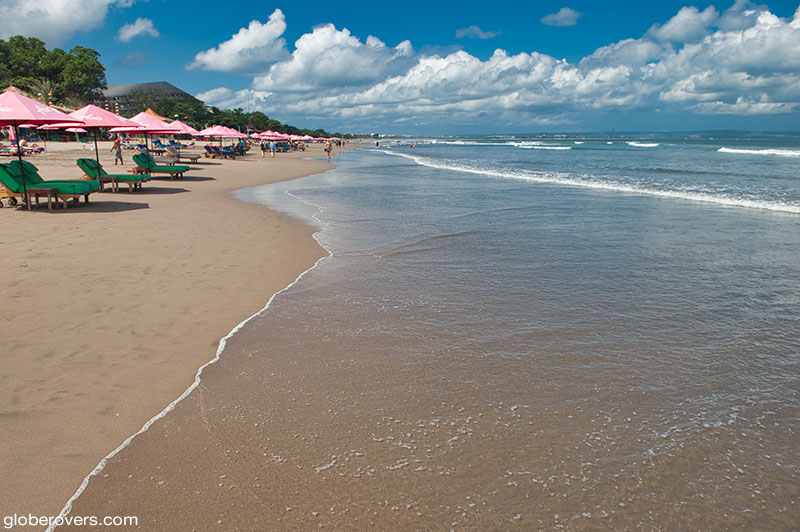
Over the past ten to twenty years, these once rustic areas have been invaded by luxury hotels, superstores, fancy restaurants, and upscale nightclubs. There are ample famous Western brand fast food restaurants and luxury clothing stores. Areas that once had a little scattering of travellers, are now crowded with tourists from around the world. The roads are jammed with cars which makes even crossing the road difficult.
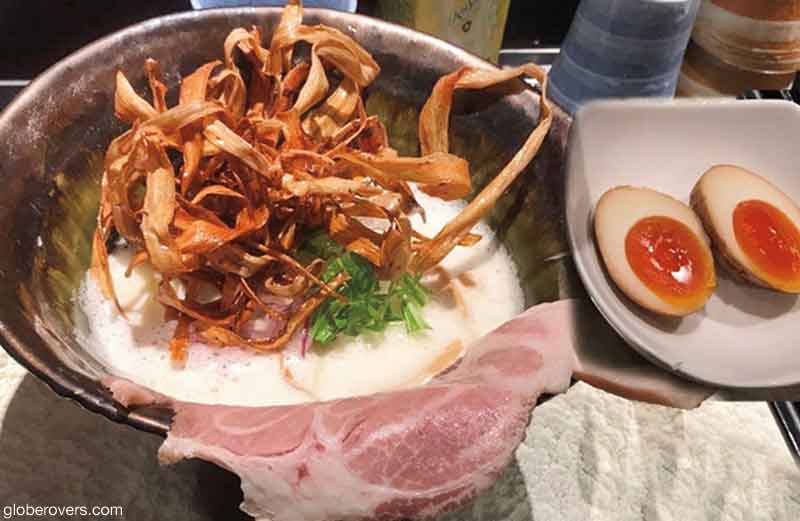
I find it rather sad how the southern part of Bali has been transformed from a “rustic village” to a crowded upscale tourist destination. The product of mass tourism!
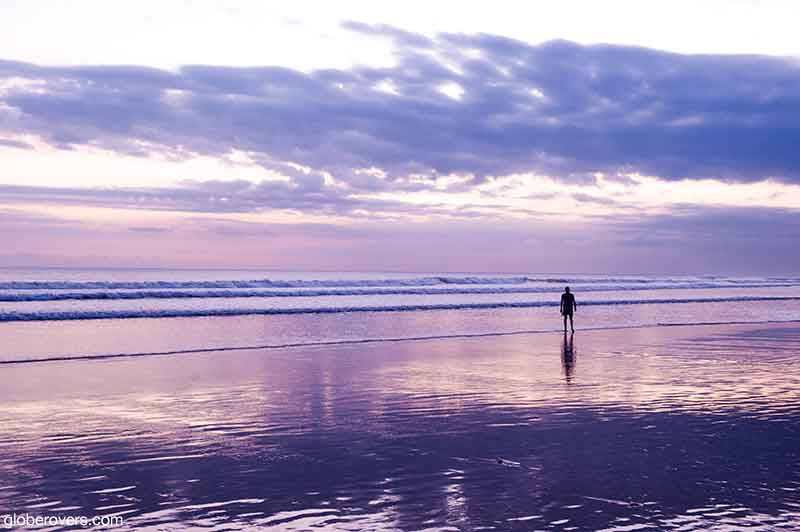
If you despise beautiful islands overcrowded with tourists, head up north, past Seminyak to the beaches of Kerobokan and Canggu, and even further north to the beautiful Tanah Lot Temple. Bali island is large and there are many areas along the coast which still remain off the beaten track, imbued with tranquillity and a rustic laid-back character.
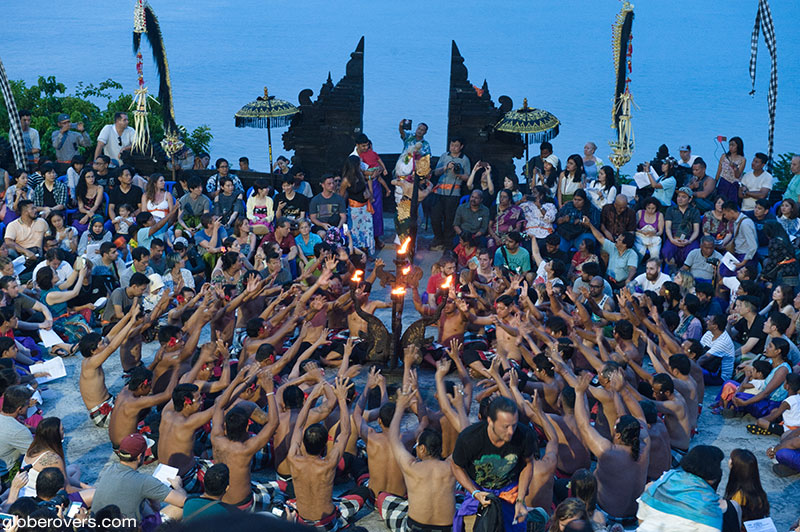
The Rice Terraces
Once you leave the larger towns such as Denpasar and the touristy areas of Kuta, Legian and Sanur, you will drive past endless rice fields and terraces. The Balinese rice farmers are known globally for their skills in producing high quality rice. Maybe it is because the Balinese believe that Dewi Sri, the goddess of rice, should be honoured to ensure good rice harvests. The farmers even set up shrines in their rice paddies to honour Dewi Sri.

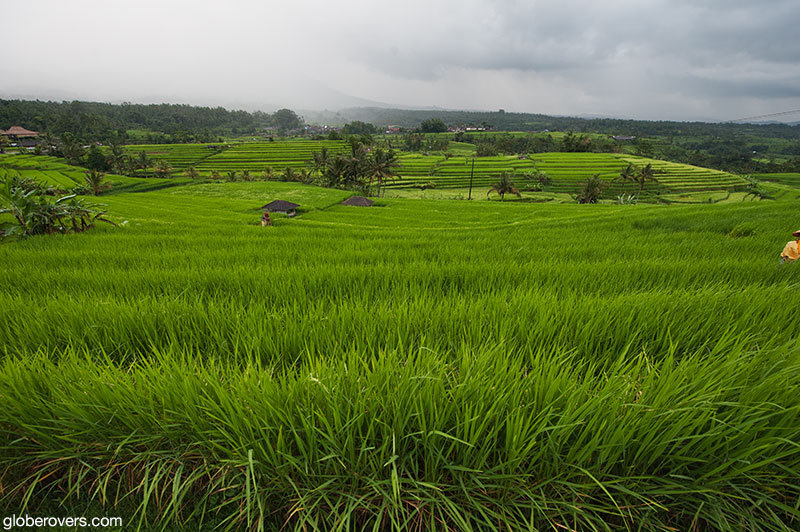
Rice is an inherent part of Balinese life. The Balinese even have three names for rice, depending on the form it takes: when growing it is referred to as padi, when stored in a bag it is beras, and when cooked and ready to be eaten, it is called nasi.
One of the best areas to experience these splendid rice terraces is at Tegalallang, about 10 km north of Ubud town. The Jatiluwih rice terraces in central Bali are also beautiful. Belimbing’s rice terraces to the southwest of Jatiluwih are also among the best!
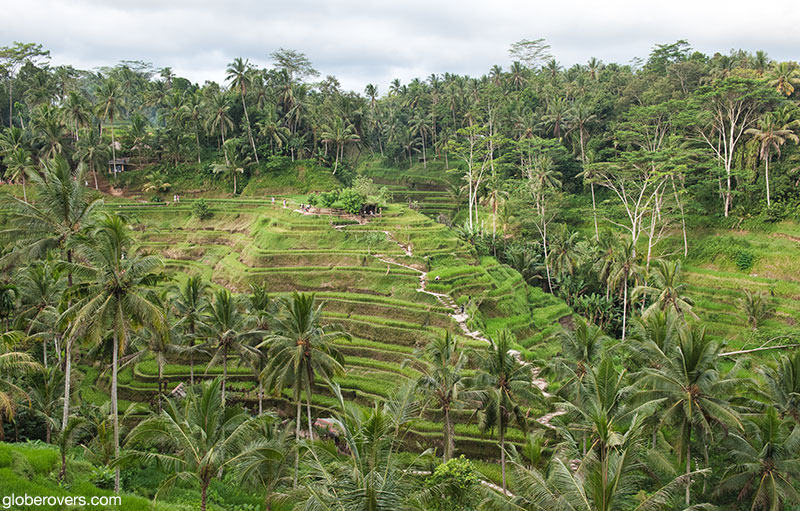
There is no best season to see the rice terraces of Bali. It all depends on whether you want to see some reflection in the water shimmering around the newly-planted rice seedlings, or the flourishing green stage, or different shades of yellow before the rice is harvested. In fact, seeing and photographing rice cultivation at any stage is fascinating, from planting to harvesting.
However, do make sure to visit Bali when the hillsides and valleys are at their greenest, which is at the tail-end of the wet season, from February to April. Rice in Bali is harvested during the dry season which generally lasts from early June to the end of July. Note that many areas have more than a single crop per year. Some have up to three crops, which makes it hard to pin down the exact time of the year to see the lush green terraces, though in the wet season you are guaranteed swathes of greenery!
Ubud Town
A typical day trip from the southern beaches driving north to the town of Ubud will provide an opportunity to enjoy the interesting Bali Bird & Reptile Park, the Bali Zoo, Tegenungan Waterfall, and the Goa Gajah Gianyar (Elephant Cave Temple). A few minutes’ drive east will get you to Pura Samuan Tiga, and the same distance south to Yeh Pulu with its ancient Balinese rock carvings.
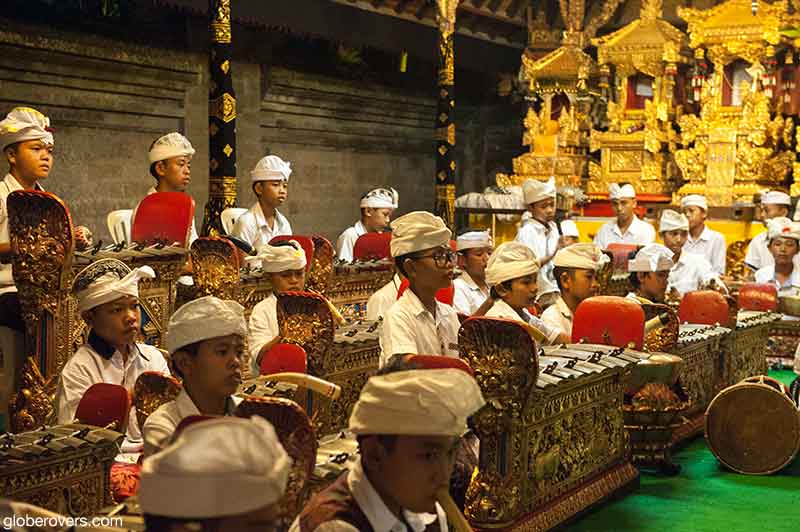
From here drive to Ubud and sleep in one of the many guesthouses or hotels catering for all budgets. Some of the more special accommodation is located on the fringes of Ubud town, nestled among the rice fields.
Among the highlights in the art-lover’s town of Ubud are the monkey forest, the Pura Taman Saraswati temple, the Pura Padang Kerta temple, Puri Saren royal palace, and the art markets around town.
Make sure to see an evening performance of Kecak dance at the Pura Dalem Taman Kaja, and visit a spa and have a Balinese massage. Other interesting traditional performances include the Barong “scary mask dance”, Baris “war dance”, Legong “pointed lady-finger dance”, and the “cendrawasih dance” performed by two ladies depicting the mating rituals of the bird of paradise.
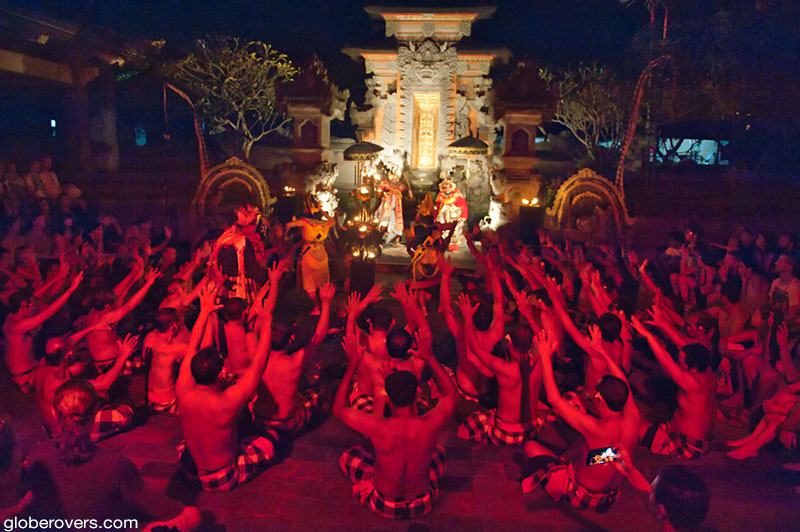
Get up before sunrise and walk down to the bridge over the river at the Gunung Lebah temple. From here the Campuhan Ridge Walk meanders high above the quaint valleys on both sides, past beautiful scenery and a few small restaurants that serve breakfast with strong Bali Kintamani coffee. The air is cool, and the hillside vistas are beautiful.
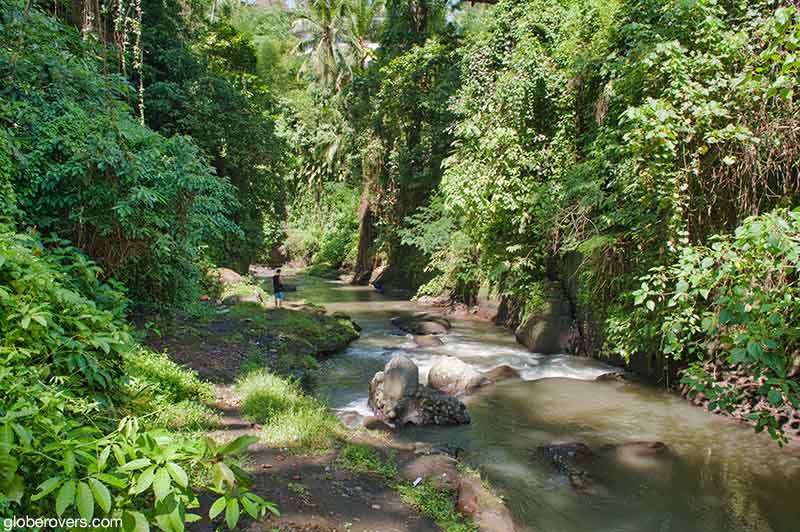
The Northwest
The area north of Ubud to the crater lakes of Danau Beratan in the northwest, and Danau Batur towards the northeast, are best explored over a two-day period.
On the first day, stop at the beautiful Taman Ayun temple in the village of Mengwi. Built in the early 17th century, this temple is a classic example of traditional architectural features loved by the rulers of the Mengwi kingdom. The towering tiers of the temple shrines and its courtyards and enclosures, complete with expansive garden landscapes with lotus and fish ponds make this temple special.
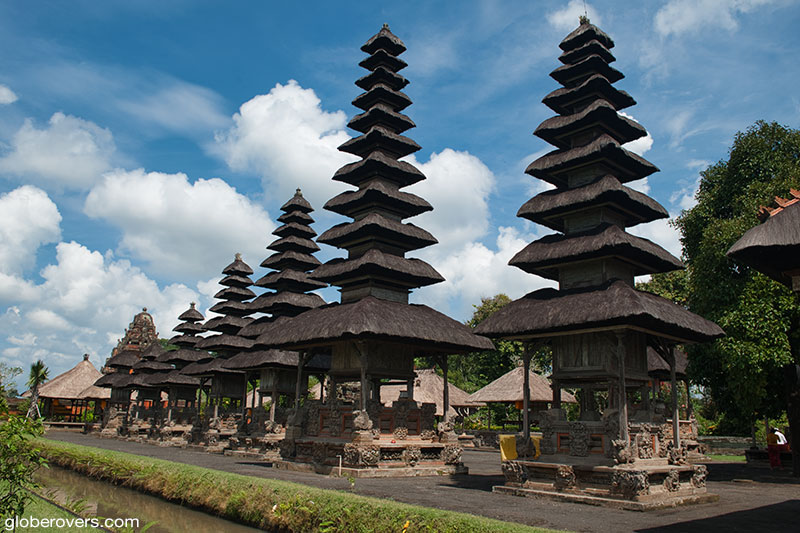
A short drive to the north of Taman Ayun temple will take you to the Alas Kedaton monkey forest. This monkey forest gets far fewer tourists than the Ubud monkey forest. The Balinese long-tail Macaques are considered sacred, and with the hordes of flying foxes, they have taken over the Alas Kedaton temple and its moss-covered walls which are being swallowed by the dense misty forest of tall nutmeg trees.
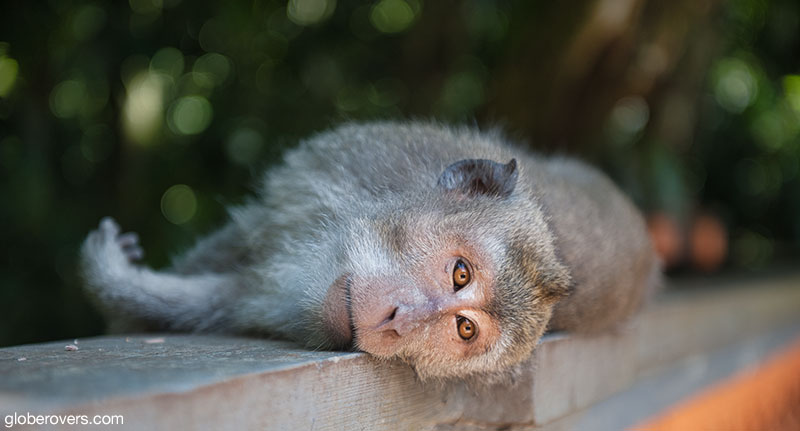
Continuing further north you will find the Pura Luhur Batukaru temple, located on the southern slope of Mount Batukaru, Bali’s second-highest volcano. Built during the 11th century and destroyed in the 17th century, it was rebuilt in 1959. The tallest, seven-tiered tower, is dedicated to Mahadewa, the god of Mount Batukaru. This highly sacred temple offers the local Hindus several ceremonies throughout the year and many parts of the temple are off-limits to tourists. The vegetation around the temple is very colourful and lush. Look out for the massive tree ferns.
Head further north to Pura Ulun Danu Beratan, a Shaivite water temple on the shores of Lake Bratan.
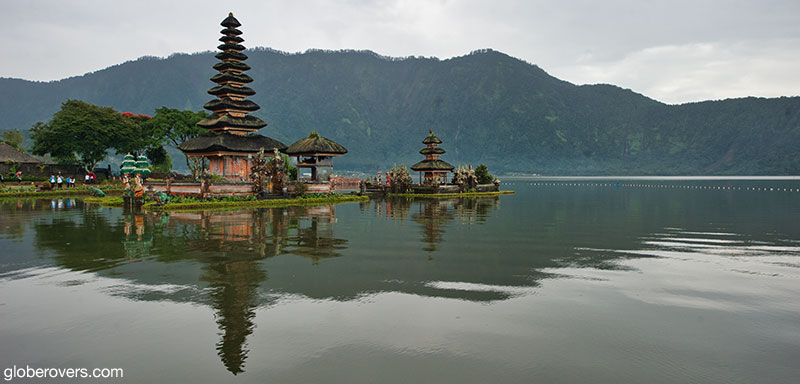
Constructed in 1633, it is dedicated to Dewi Danu, the Balinese water, lake and river goddess. This temple is one of Bali’s most famous and picturesque landmarks, and likely the most photographed temple in Bali. The mirror reflections of the tall tiered towers on the smooth surface of the lake surrounding it give the impression that it is floating on the water.
The mist-covered mountains encircling the lake provide a scenic backdrop to the temple. Be here during sunrise or sunset for brilliant photographic scenery.
The Northeast
Directly to the east of Lake Bratan lies Mount Batur, another active volcano. To the east side of the volcano is the caldera Lake Batur known for the many hot springs along its western shores.
To the west side of the volcano is Pura Ulun Danu Batur temple, the second most important temple in Bali, after Pura Besakih to the southeast. Also dedicated to Dewi Danu, the Balinese water, lake and river goddess, this temple was built in 1926 after a violent volcanic eruption destroyed the earlier 17th-century Mengwi Kingdom temple. The tallest 11-tiered tower was spared by the volcano and still stands today.
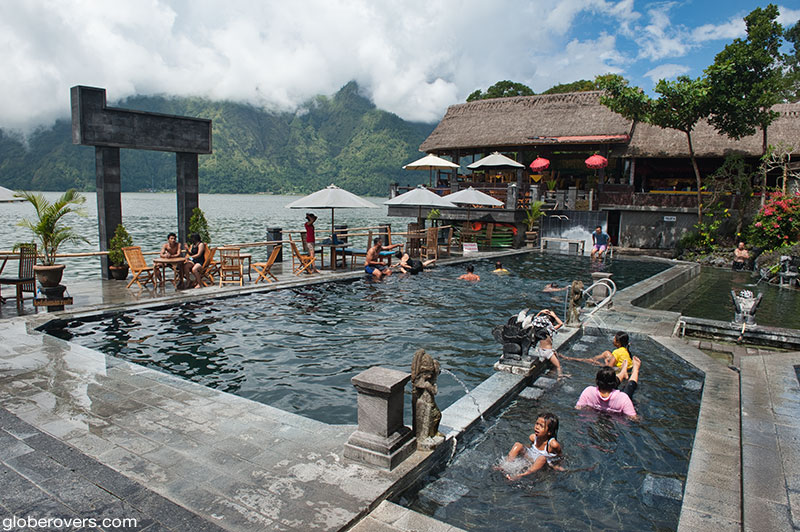
After a relaxing time in the Danau Batur Hot Springs, head southeast to Pura Besakih, affectionately known as the “Mother Temple of Bali”. Located at an elevation of over 900 metres along the southwestern slope of active Mount Agung volcano, it is the most revered and largest Hindu temple in Bali.
The artistic temple complex covers a vast area and offers breathtaking views of the surrounding mountain scenery.
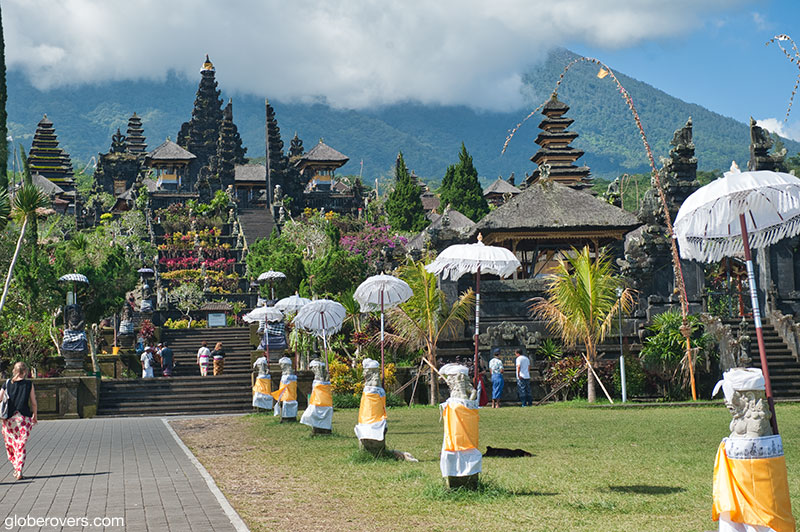
While some ancient inscriptions dating back to the 2nd century refer to this temple, there is enough evidence that it was a popular and one of the holiest Hindu temples by the 15th century.
The centre of the temple complex, known as Pura Penataran Agung, consists of 22 temples on six rising terraces and is the main place of worship. Assumed to have been saved by the gods, the temple miraculously survived a devastating eruption by Mount Agung in 1963 which killed an estimated 1,100 to 1,500 people. Mudflows caused by heavy rainfall after the eruption killed an additional number of people. Even more people were killed by pyroclastic flows a few weeks later. At the time of writing, June 2018, Mount Agung continues its high levels of seismic activity, so the raised alerts should be monitored before visiting this area.
☛ Read more: 10 Great Travel Experiences in Indonesia
☛ Read more: 9 Amazing travel experiences in Bali
Be here during a full moon when pilgrims throng to the temple. During April, the temple is elaborately decorated for the festival of Odalan when pilgrims hike through the heavily incensed air while humming ancient prayers for a prosperous life.
Done with Pura Besakih, head southwest to Ubud town for a well-deserved spa treatment and traditional dance show, followed by a romantic dinner. You will be so happy you are visiting Bali, the island of the gods!
A few more photos of Bali Island

Pura Besakih 
Pura Tuluk Biyu Batur 
Pura Luhur Batukaru 
Taman Ayun 
Pura Besakih 
Pura Ulun Danu Batur 
Pura Ulun Danu Beratan
More of Indonesia:

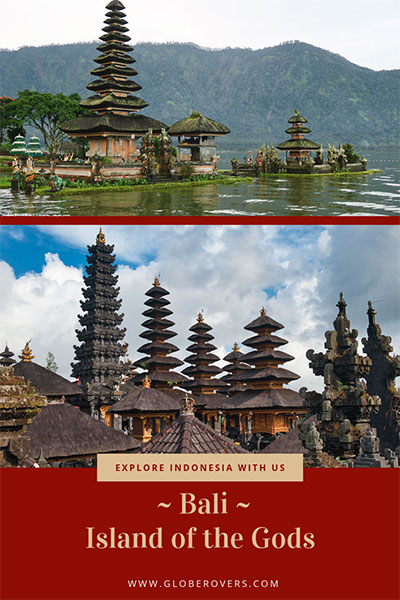

Blog post and photos by Peter who has been travelling almost full-time since 2005 and has been to over 122 countries. He visited several countries, such as Japan, more than 20 times. Peter is Editor-in-Chief and Publisher of GlobeRovers Magazine, an independent travel magazine focused on intrepid destinations.

